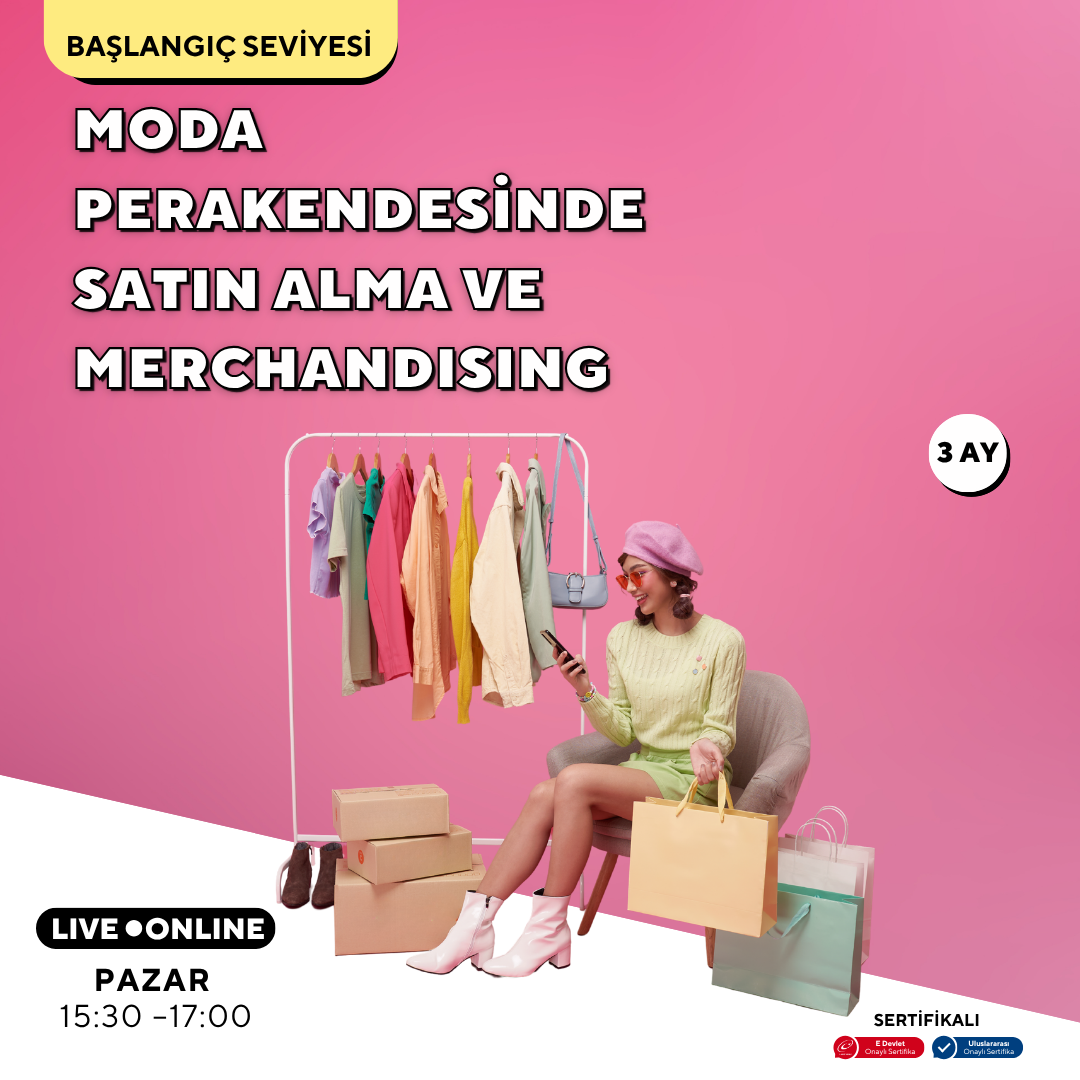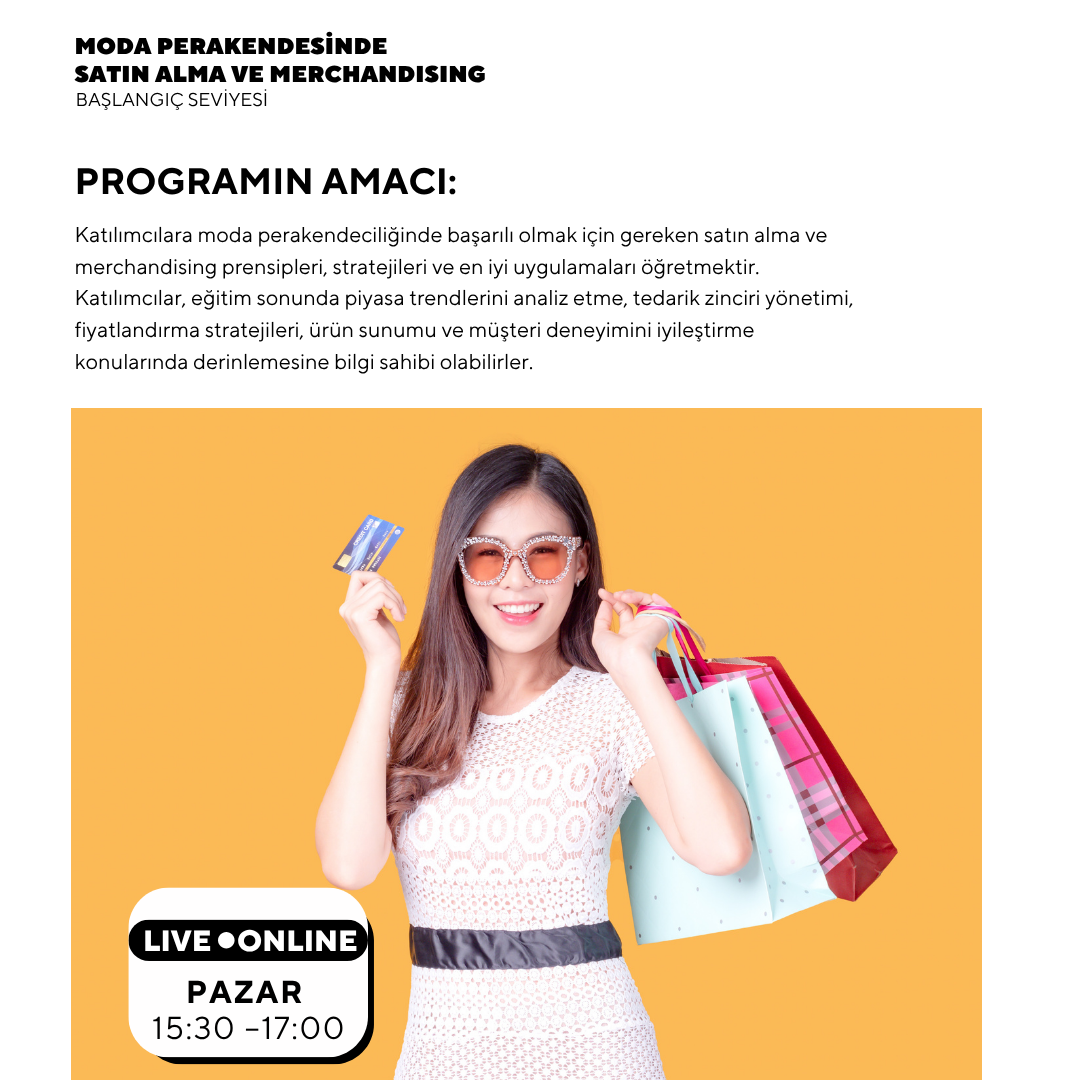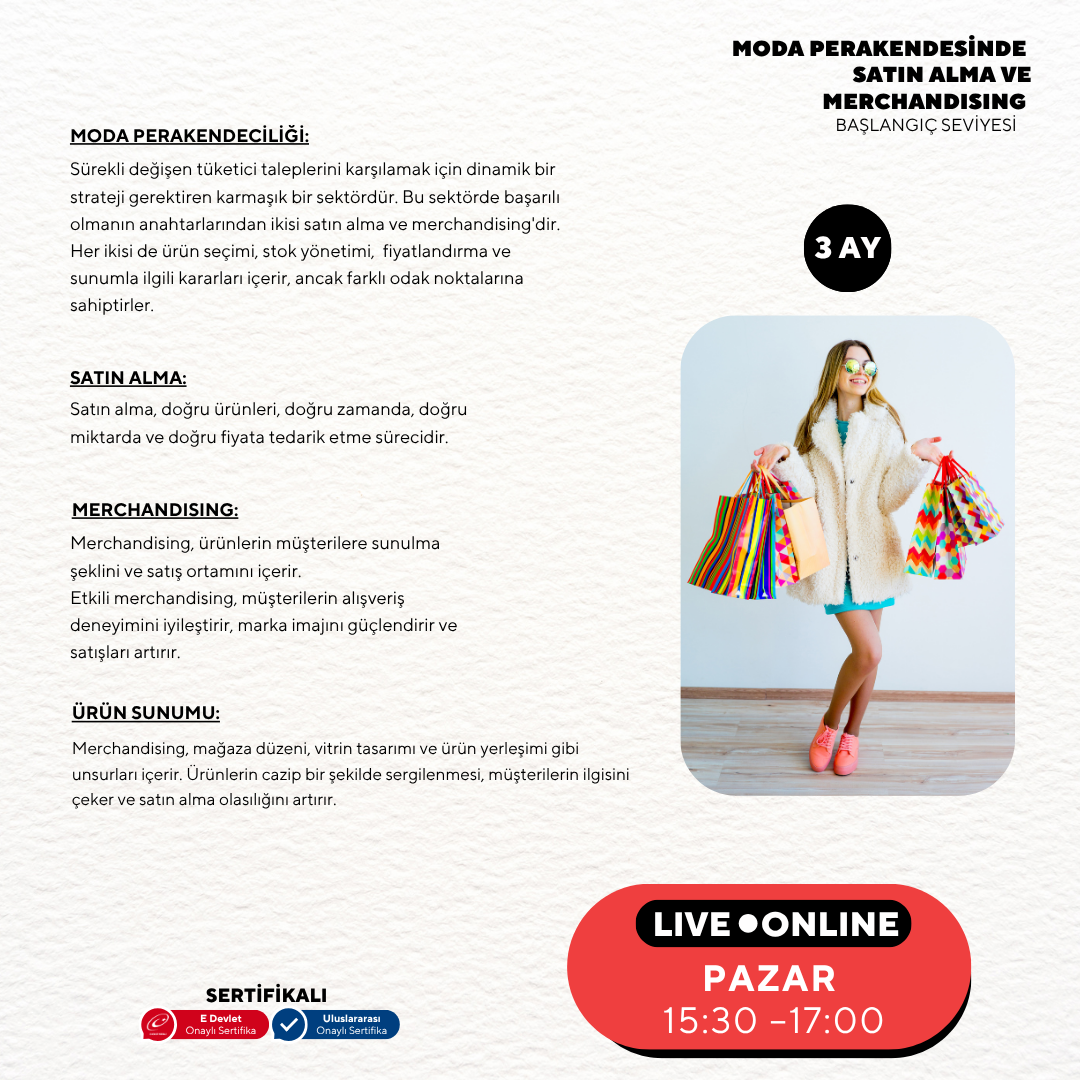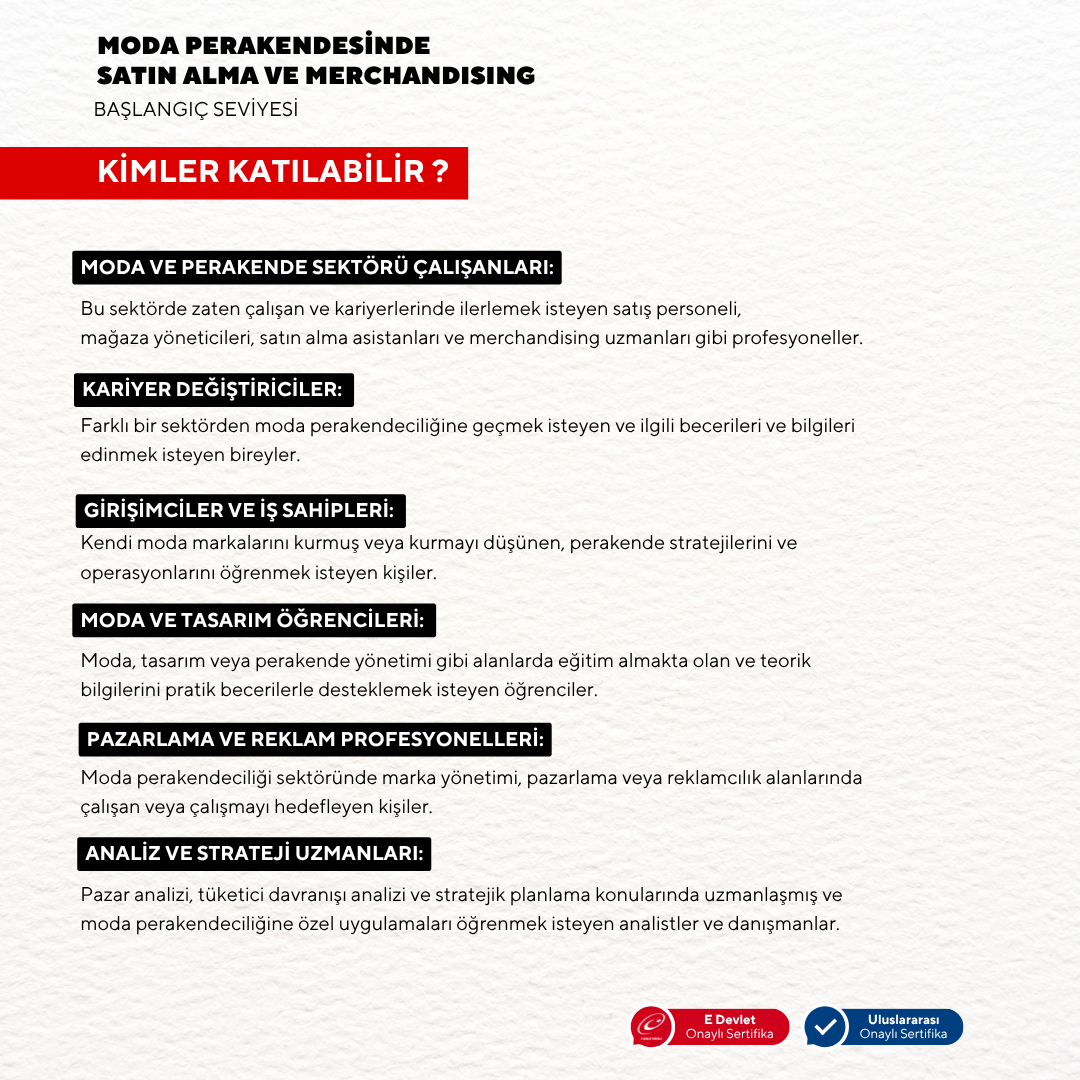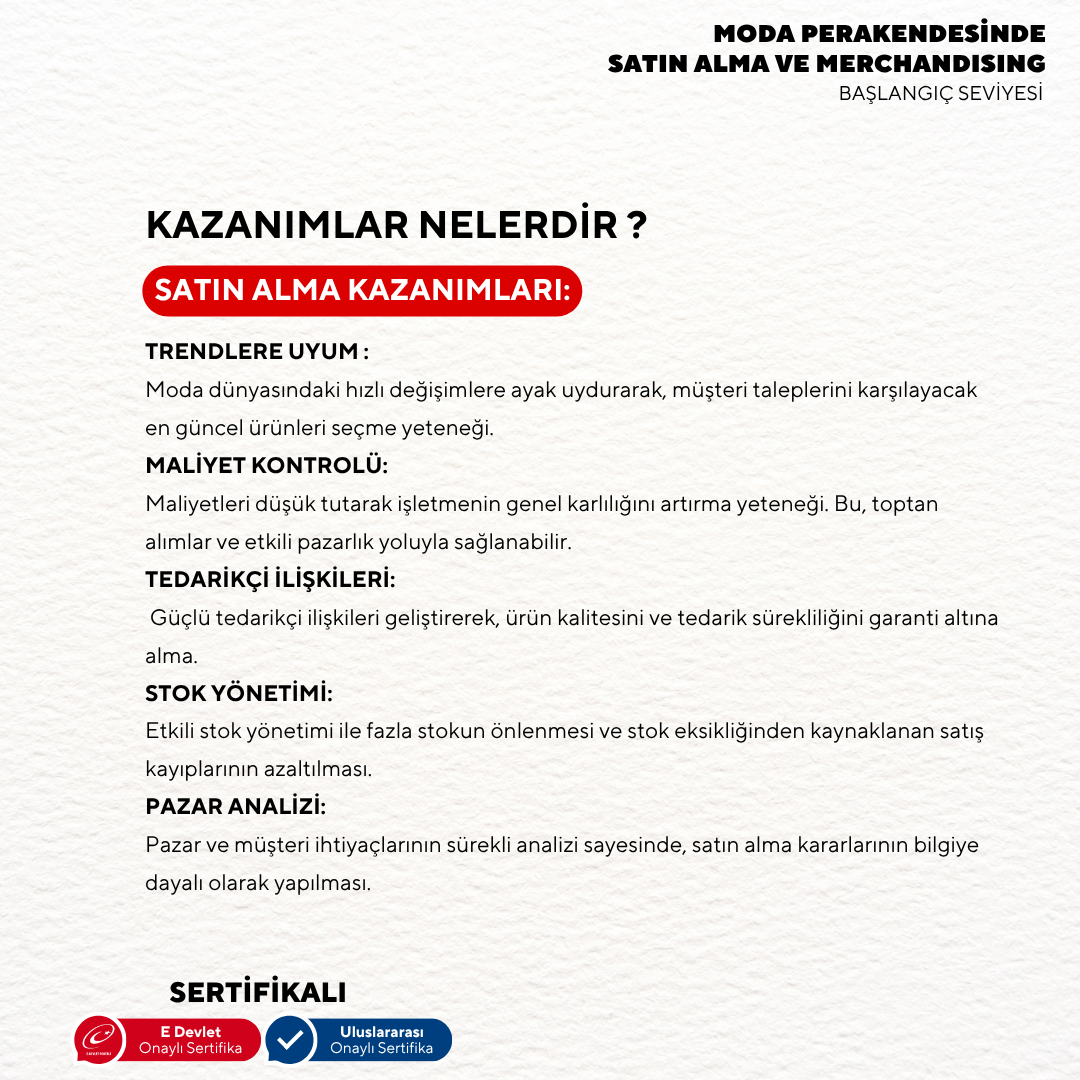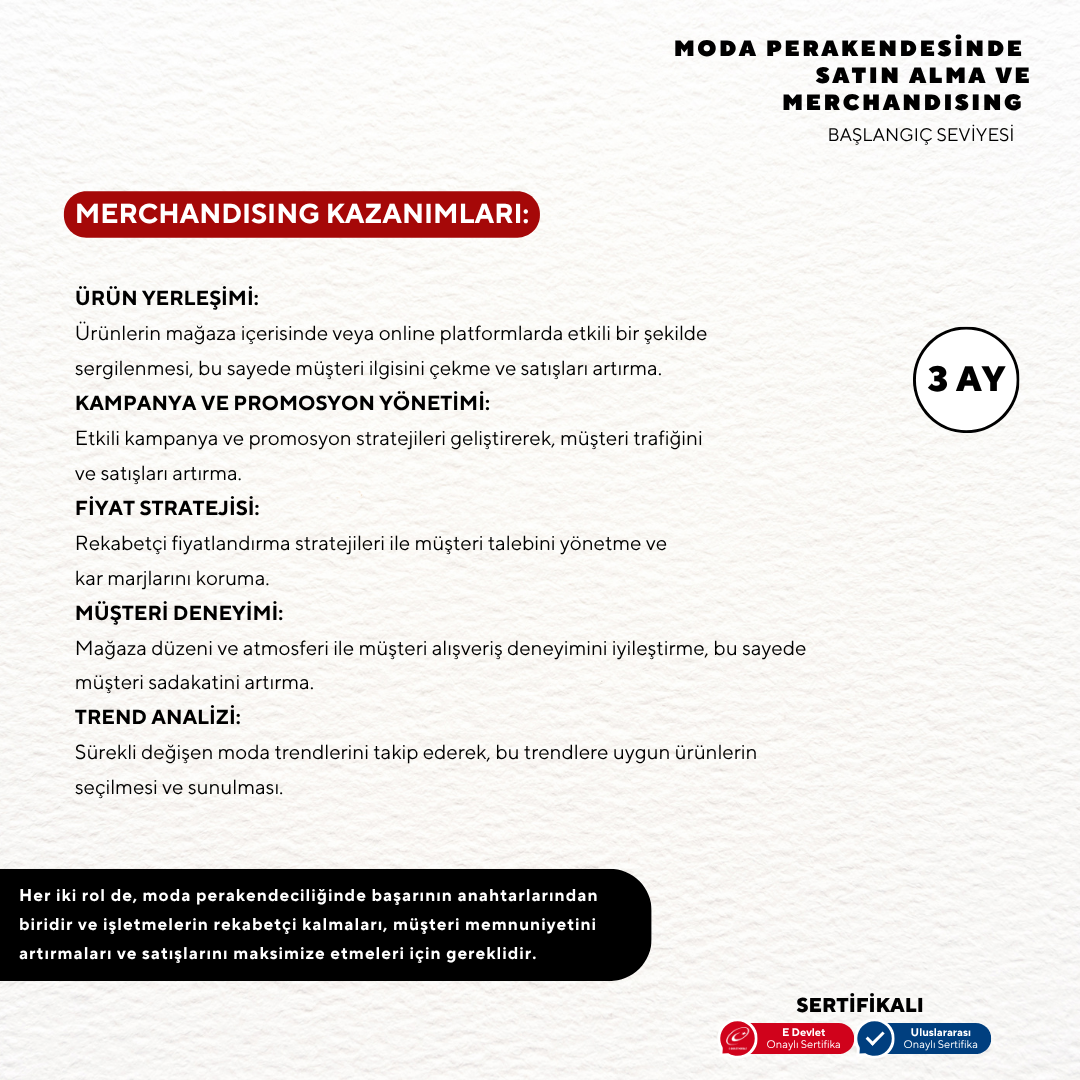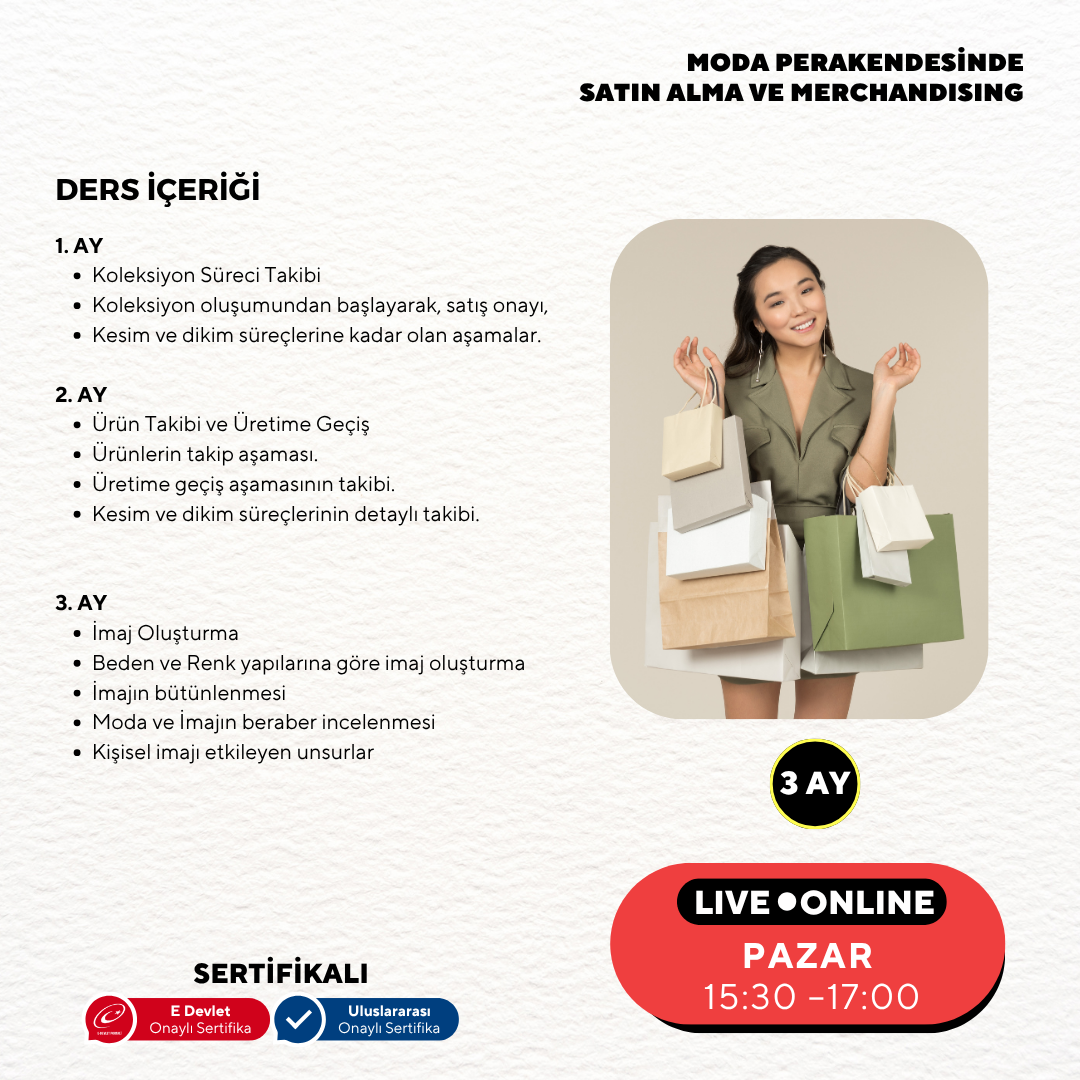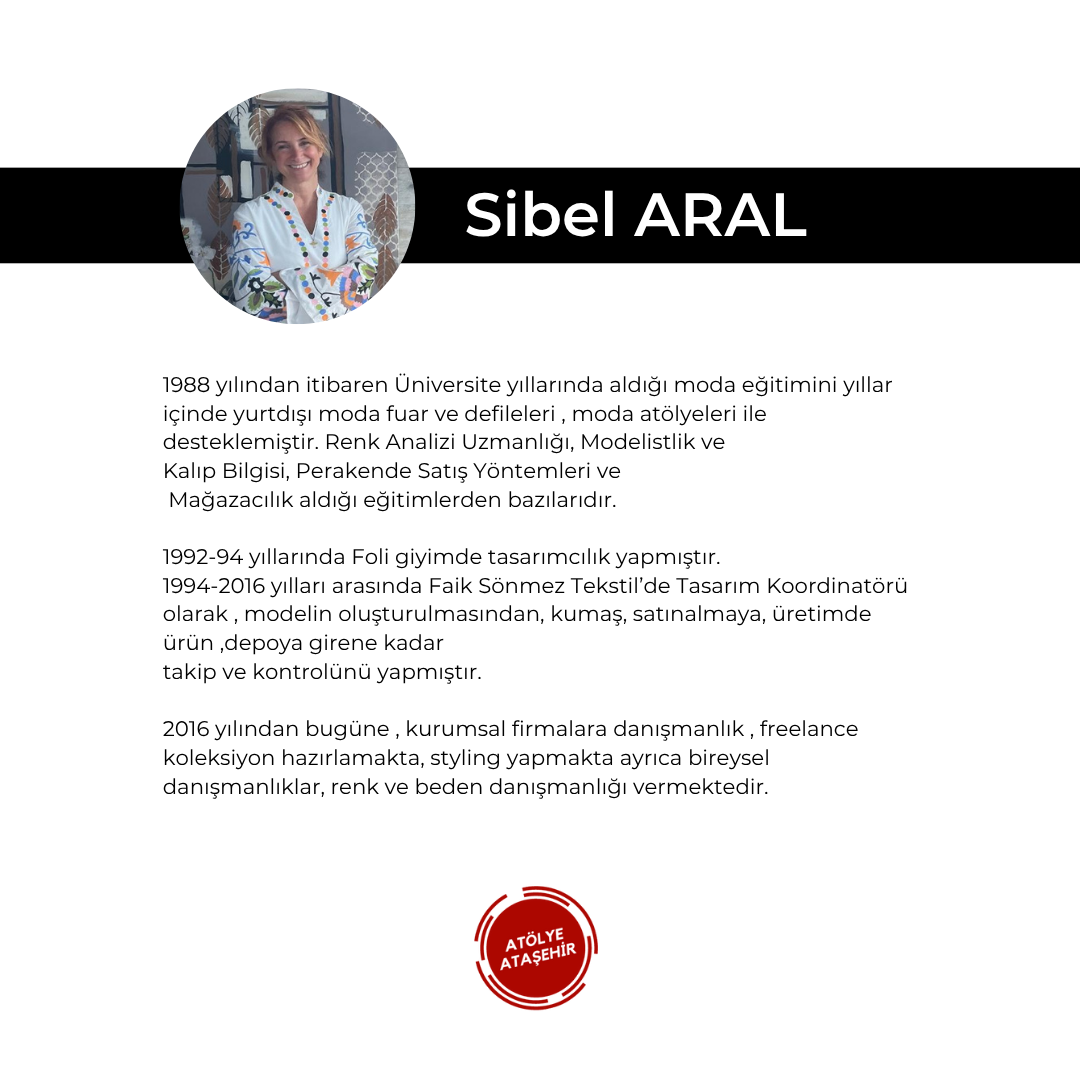Buying and Merchandising in Fashion Retail (Online)-Beginner Level
PURCHASING AND MERCHANDISING IN FASHION RETAIL
BEGINNER LEVEL -Online
Fashion Retail:
It is a complex industry that requires a dynamic strategy to meet ever-changing consumer demands. Two of the keys to success in this industry are purchasing and merchandising. Both involve decisions about product selection, inventory management, pricing, and presentation, but they have different focuses.
Purchasing:
Purchasing is the process of procuring the right products, at the right time, in the right quantity, and at the right price.
Merchandising:
Merchandising involves the way products are presented to customers and the sales environment. Effective merchandising improves customers' shopping experience, strengthens brand image and increases sales.
Product Presentation:
Merchandising includes elements such as store layout, window design, and product placement. Displaying products in an attractive manner attracts customers' attention and increases the likelihood of purchase.
Who Can Participate?
Fashion and Retail Industry Employees:
Sales personnel who are already working in this sector and want to advance their careers,
professionals such as store managers, purchasing assistants and merchandising specialists.
Career Changers:
Individuals who want to move into fashion retail from a different industry and want to acquire the relevant skills and knowledge.
Entrepreneurs and Business Owners:
People who have established or are considering establishing their own fashion brands and want to learn retail strategies and operations.
Fashion and Design Students:
Students who are taking programs in fields such as fashion, design or retail management and want to support their theoretical knowledge with practical skills.
Marketing and Advertising Professionals:
Individuals working or aiming to work in brand management, marketing or advertising in the fashion retail industry.
Analysis and Strategy Experts:
Analysts and consultants who specialize in market analysis, consumer behavior analysis and strategic planning and want to learn applications specific to fashion retail.
What are the gains?
PURCHASE BENEFITS:
ADAPT TO TRENDS:
Ability to keep up with the rapid changes in the fashion world and choose the most up-to-date products to meet customer demands.
COST CONTROL:
The ability to increase the overall profitability of the business by keeping costs low. This can be achieved through bulk purchasing and effective bargaining.
SUPPLIER RELATIONS:
Ensuring product quality and supply continuity by developing strong supplier relationships.
STOCK MANAGEMENT:
Preventing excess stock and reducing sales losses caused by stock shortages through effective stock management.
MARKET ANALYSIS:
Making informed purchasing decisions through continuous analysis of market and customer needs.
MERCHANDISING GAINS:
PRODUCT LAYOUT:
Effectively displaying products in-store or on online platforms, thus attracting customer attention and increasing sales.
CAMPAIGN AND PROMOTION MANAGEMENT:
Increasing customer traffic and sales by developing effective campaign and promotion strategies.
PRICE STRATEGY:
Managing customer demand and maintaining profit margins with competitive pricing strategies.
CUSTOMER EXPERIENCE:
Improving customer shopping experience through store layout and atmosphere, thus increasing customer loyalty.
TREND ANALYSIS:
By following the ever-changing fashion trends, selecting and presenting products that are suitable for these trends.
Both roles are key to success in fashion retail and are essential for businesses to remain competitive, increase customer satisfaction and maximise sales.
COURSE CONTENT
1st MONTH
- Collection Process Tracking
- Starting from collection creation to sales approval,
- The stages from cutting to sewing.
2. MONTH
- Product Tracking and Transition to Production
- Follow-up phase of products.
- Monitoring the transition to production phase.
- Detailed monitoring of cutting and sewing processes.
3rd MONTH
- Creating an Image
- Creating images according to body and color structures
- Integration of the image
- Examining Fashion and Image Together
- Factors affecting personal image
SIBEL ARAL
Since 1988, she has supported her fashion education, which she received during her university years, with fashion fairs and fashion shows abroad and fashion workshops over the years. Some of the trainings she received are Color Analysis Expertise, Modeling and Pattern Knowledge, Retail Sales Methods and Merchandising. She worked as a designer at Foli Giyim between 1992-94. Between 1994-2016, she worked as a Design Coordinator at Faik Sönmez Tekstil, monitoring and controlling the creation of the model, fabric, purchasing, production and until the product enters the warehouse. Since 2016, she has been providing consultancy to corporate companies, preparing freelance collections, styling and also providing individual consultancy, color and size consultancy.
